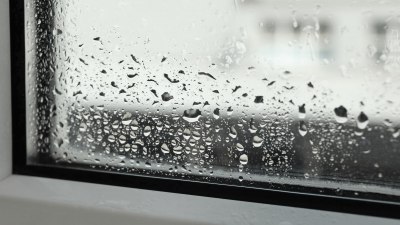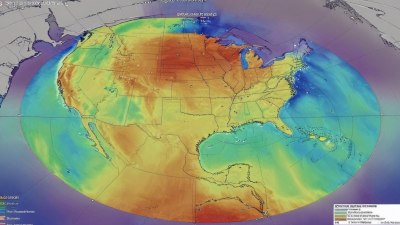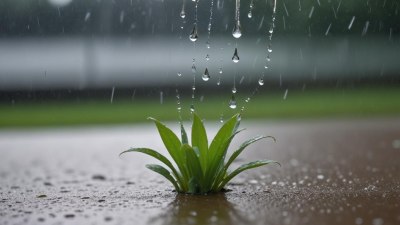Why Humidity Makes Heat Feel Worse The Invisible Factor
Discover how humidity affects heat perception and why it makes temperatures feel more intense.

Understanding how humidity influences our perception of heat is essential, especially during the sweltering summer months. When we talk about heat, we often consider temperature alone; however, it is crucial to incorporate humidity into the equation. This article delves into the science behind humidity and its profound effect on our comfort levels in hot weather, illuminating why humidity makes heat feel worse than it technically is.
The Basics of Humidity
Humidity refers to the amount of moisture present in the air. It is expressed as a percentage, known as relative humidity, which indicates the current amount of water vapor compared to the maximum amount the air can hold at that temperature. When the air is saturated with moisture, it leads to high humidity, while a lower percentage means the air is drier. This concept is crucial for understanding why our body reacts to humidity during hot weather.
The Role of our Body’s Cooling Mechanism
To maintain a stable body temperature, the human body employs several mechanisms to cool itself, with perspiration being the most significant. When the body heats up, sweat glands produce moisture, which evaporates from the skin’s surface, cooling the body down. However, this cooling effect is significantly diminished in high-humidity environments. If the air is already filled with moisture, sweat does not evaporate effectively, causing the body to struggle with temperature regulation, which heightens the sensation of heat.
Understanding the Heat Index
The heat index is a measure that combines air temperature and relative humidity to determine the ‘feels-like’ temperature. Developed by Robert G. Steadman in 1979, this index highlights how high humidity can elevate the risk of heat-related illnesses. For instance, a temperature of 90°F with a relative humidity of 70% can feel like 105°F, illustrating how humidity amplifies the oppressive nature of heat.
Physiological Effects of High Humidity
High humidity can lead to several physiological responses in the body, which can contribute to the feeling of discomfort. When humidity levels rise, the body undergoes several changes, including increased heart rate, altered blood flow, and heightened respiration—all in an effort to cool down. This results in a sense of fatigue and can cause heat exhaustion or heat stroke if the body is unable to cope with the oppressive heat.
Heat-Related Illnesses: A Serious Concern
The dangers of high humidity, combined with heat, should not be underestimated. Heat exhaustion and heat stroke are serious conditions that can arise when the body becomes overwhelmed by the heat and cannot regulate its temperature. Symptoms of heat exhaustion include heavy sweating, weakness, dizziness, nausea, and fainting. In contrast, heat stroke is life-threatening and occurs when body temperature rises to 104°F or higher. Recognizing these symptoms is crucial, especially in vulnerable populations such as the elderly, young children, and those with pre-existing medical conditions.
Why Some Regions Experience More Humidity
Geographical location plays a significant role in determining humidity levels. Areas situated near large bodies of water, such as oceans or lakes, typically experience higher humidity because water evaporates into the atmosphere. Additionally, warm air holds more moisture than cold air, which means regions with hot climates often face heightened humidity levels. Seasonal changes are also a factor; for instance, summer typically brings higher humidity levels in many areas due to increased evaporation combined with rising temperatures.
Adapting to Humidity: Tips and Tricks
While we cannot eliminate humidity from our lives, there are several strategies we can employ to cope with high humidity levels effectively. First, staying hydrated is essential. Drinking plenty of fluids helps replace the water lost through sweat. Additionally, wearing lightweight, breathable clothing can facilitate better air circulation around the body, enhancing moisture evaporation. Utilizing fans or air-conditioning can also help reduce indoor humidity levels, providing a more comfortable living environment. Finally, planning outdoor activities for early morning or late evening when temperatures are cooler can help mitigate the impacts of heat and humidity.
The Psychological Effects of Humidity and Heat
Heat and humidity can also take a toll on our mental well-being. High temperatures combined with high humidity levels can lead to irritability, lethargy, and difficulty concentrating. Research has shown a correlation between elevated temperature and increased aggression. Furthermore, these environmental factors can worsen conditions such as anxiety or depression, often resulting in an overall decrease in quality of life. Recognizing the psychological impact of humidity and heat is vital when discussing strategies to cope with these conditions.
Technological Solutions for Heat and Humidity
In recent years, technological advancements have introduced various solutions designed to combat the adverse effects of humidity and heat. Smart thermostats and home automation systems can regulate indoor temperatures and humidity levels, ensuring a more comfortable living space. Furthermore, portable dehumidifiers can be employed in high-humidity environments to reduce excess moisture. HVAC systems equipped with humidity control offer additional support for climate regulation, especially in areas severely affected by humidity.
Environmental Impact of Heat and Humidity
The relationship between heat and humidity is not limited to human comfort; it is also a matter of environmental concern. Climate change has resulted in increasingly extreme weather patterns, including rising temperatures and fluctuating humidity levels. This change can lead to adverse effects on local ecosystems and biodiversity. For example, increased humidity can foster the growth of harmful molds and pests that threaten agriculture and public health. Addressing the environmental impact of humidity and heat is essential for ensuring both human and ecological well-being.
Future Research Directions
The intersection of heat, humidity, and human health remains an area ripe for research. As climate change continues to affect our environment, understanding its impact on heat and humidity will be crucial for future public health strategies. Investigating the physiological and psychological effects of these elements on various demographics can lead to better-prepared public health responses and coping strategies. Furthermore, developing advanced forecasting models will help communities anticipate extreme weather conditions, allowing for more proactive measures to protect public health.
In summation, humidity is an often-overlooked factor that exacerbates the sensation of heat, complicating our ability to cope with high temperatures. Through understanding the science behind heat and humidity, we can take informed actions to minimize discomfort and health risks during hot and humid days. From recognizing the physiological and psychological effects to employing practical coping strategies, knowledge is key. Ultimately, as climate change brings shifts in weather patterns, staying informed and adaptable will be essential to safeguard our well-being in an increasingly humid world.











